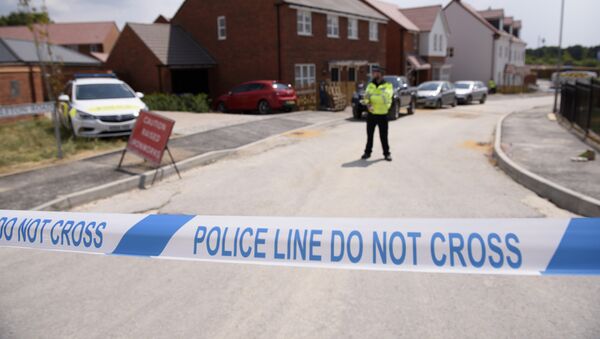Source of Poison
The Metropolitan Police said on July 13, 14 days after Rowley and Sturgess were poisoned, that they had found a small bottle containing the A-234 nerve agent (usually called "Novichok" by the UK authorities), in the victims' house and which allegedly was the source of the poisoning. The police didn't give any details on the bottle's appearance or where the victims could have found it, although a friend of the couple earlier suggested that "dumpster diving" might have led to their contamination.
According to the UK police, scientists have yet to analyze its contents to determine whether the poison is from the same batch that was allegedly used to poison the Skripals. The Porton Down laboratory earlier failed to determine whether the poison discovered in Rowley and Sturgess was from the same batch as the one used against the Skripals.
READ MORE: UK Police Admit Salisbury-Amesbury Link Not Found, No Trace of Contaminated Item
It is so far unclear which laboratory will be used to analyze the bottle's contents, but in the Skripal case all the tests were conducted by the military laboratory Porton Down, located not far from both Amesbury and Salisbury and has historically been tasked with creating and analyzing chemical weapons and antidotes to them. At the same time, Bruce George, a former MP once confessed in an interview with the BBC that UK officials don't really know "everything that goes on in Porton Down." In the past the facility's work has led to contamination of the area with hazardous agents.
Commenting their recent findings, the UK police noted that they couldn't guarantee that it was the last A-234 contaminated item and urged all citizens to avoid picking up unknown objects.
Condition of the Victims
Dawn Sturgess, 44 died in the hospital on July 8, while another victim, Charlie Rowley, 45, regained consciousness on July 10, with medics stating the next day he was no longer in critical condition. Police are reportedly working with the survivor to determine where the pair was exposed to the poison.
READ MORE: British Man Regains Consciousness After Amesbury Incident — Hospital
Craig Pattenden, a friend of the couple, who was with them on the day they were hospitalized, said in interview with Sputnik that Sturgess was the first to show signs of poisoning such as convulsions, foam coming out of her mouth and pupils narrowing to the point that they could hardly be seen. He expressed confidence that it was Sturgess who might have picked up a contaminated object on the street.
Lack of Communication Between the UK and Russia
Although the UK counter-terrorism office has admitted on multiple occasions it has no proof of a link between the Skripals' poisoning and the recent incident in Amesbury, that didn't stop UK Defense Secretary Gavin Williamson from accusing Russia of Dawn Sturgess' death. The Russian Foreign Ministry has rejected the accusations regarding Moscow's involvement in both the Salisbury and Amesbury poisonings. Russia also suggested conducting a joint investigation into the recent poisoning of the couple, as it previously did when the Skripals were poisoned, but Britain has so far rejected such offers.
READ MORE: Moscow Responds to UK Defence Chief's Claims of Involvement in Amesbury Incident
UK Security Minister Ben Wallace also expressed certainty that Moscow was responsible for the poisoning and suggested that it should call London to clarify the situation. However, according to Russian Ambassador to the UK, Alexander Yakovenko, Russia received no response to phone calls to former UK Foreign Minister Boris Johnson and UK Home Secretary Sajid Javid. Yakovenko believes that the lack of response shows that Britain "has nothing to say." In his interview with Russian TV channel "Rossiya 1," he confirmed that there are currently no communications between London and Moscow regarding the Amesbury incident.


